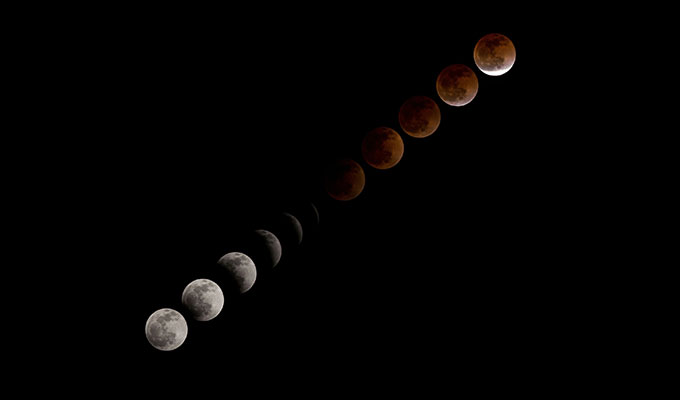Nanjing astronomy fans are in for a treat in the early hours of Saturday, 28 July, as the longest lunar eclipse of the 21st Century shall take place, with Nanjing in the path of partial totality.
While not as spectacular as a solar eclipse, what makes this particular astronomical event exciting is the fact that Nanjing has for much of this year been blessed with clear and pollution-free skies. Barring cloud cover, Saturday morning’s early eclipse shall mark the first time in many people’s lifetimes that it has been possible to witness such an celestial occurrence.
Local astronomy buff, Allan Bu, told The Nanjinger, “The polluted skies in Nanjing for so many years have meant my astronomy has mostly been done with the Internet. Now I’m just hoping for clear skies [on Saturday] so that I can finally wake up real early to feel like a real astronomer for almost the first time, and see this longest lunar eclipse”.
Complete totality of the longest lunar eclipse shall occur between 03:30 and 05:13, while the complete period of the Earth passing between the sun and the moon shall last 4 hours. With a window almost 2 hours long and, at time of writing, a favourable weather forecast, Bu looks set to get his wish.
During this longest lunar eclipse, as Space.com explains, “Some of the sunlight going through Earth’s atmosphere is bent around the edge of our planet and falls onto the moon’s surface. Earth’s air also scatters more shorter-wavelength light (in colours such as green or blue); what’s left is the longer-wavelength, redder end of the spectrum”.
Space fans have, in fact, a double treat in store, as Saturday also sees the Earth and Mars come in opposition, with the Earth lying directly between Mars and the Sun. Just 4 days later, Mars will reach its closest point to Earth, only 57.6 million kilometres distant. At its greatest distance from Earth, the red planet lies approximately 401 million kilometres from our blue-green dot in the cosmos.
This all means that Mars is presently the fourth-brightest object in Earth’s sky, trailing Venus, the moon and the sun, a status it shall hold until 7 September, when the title passes back into the hands of the gas giant Jupiter.











